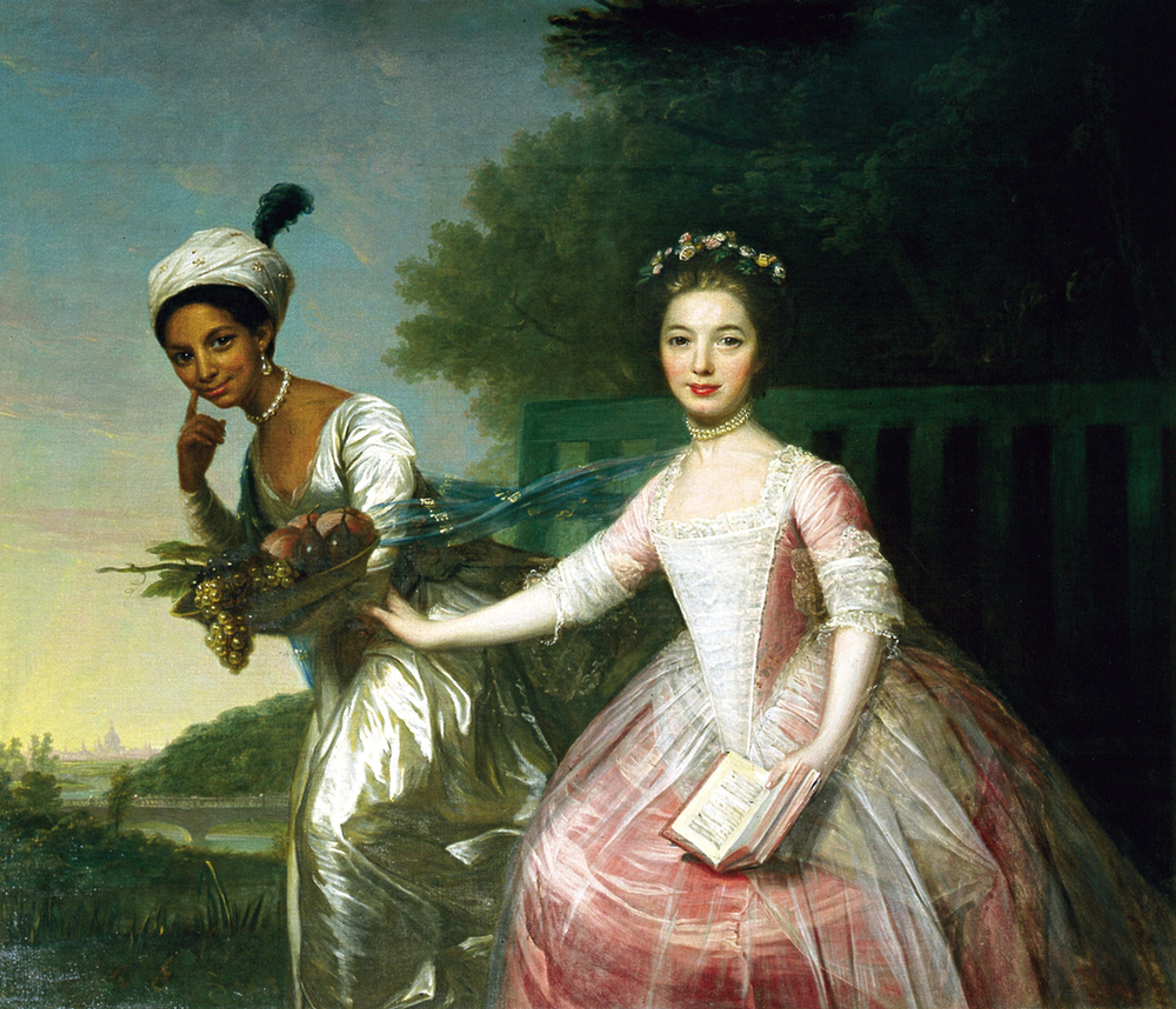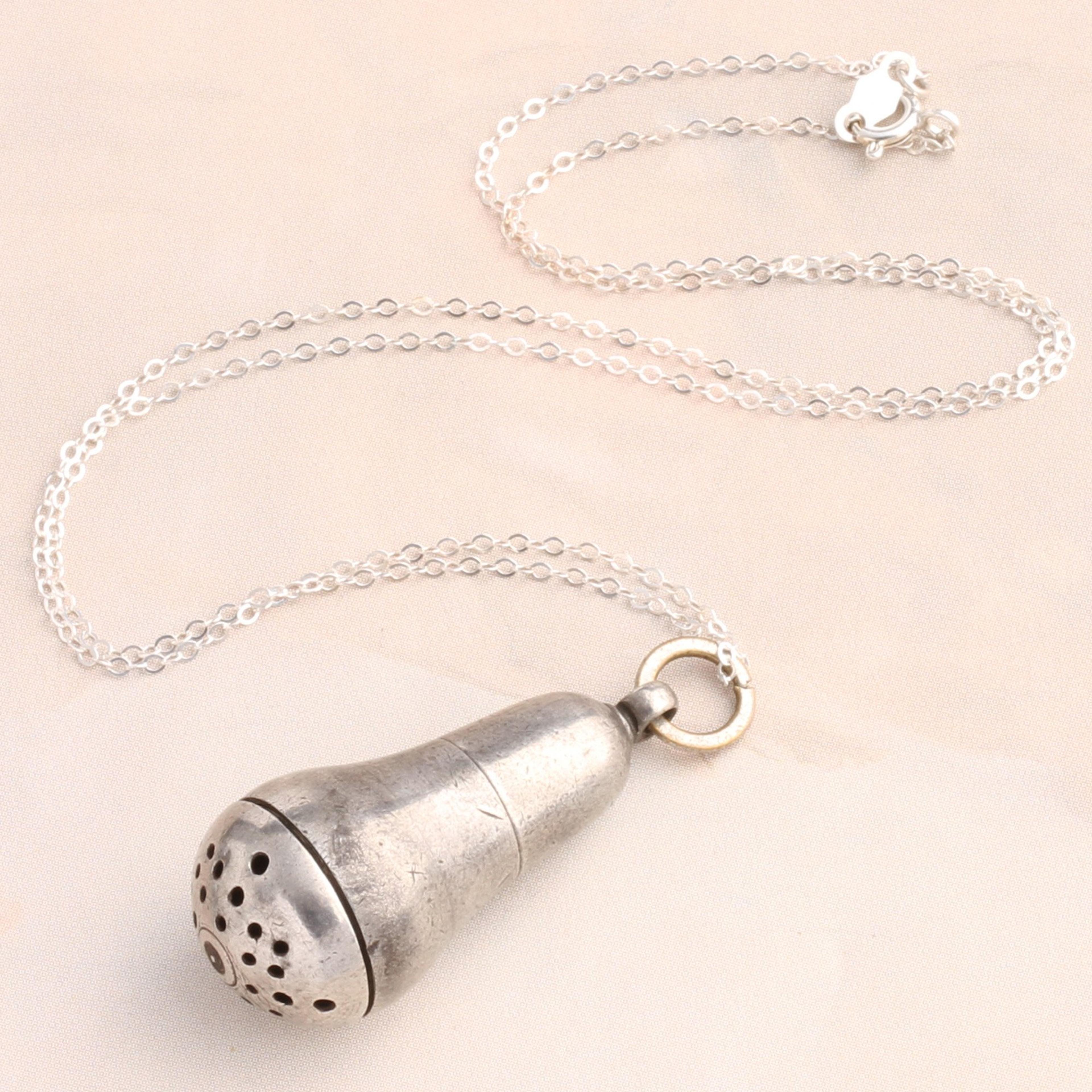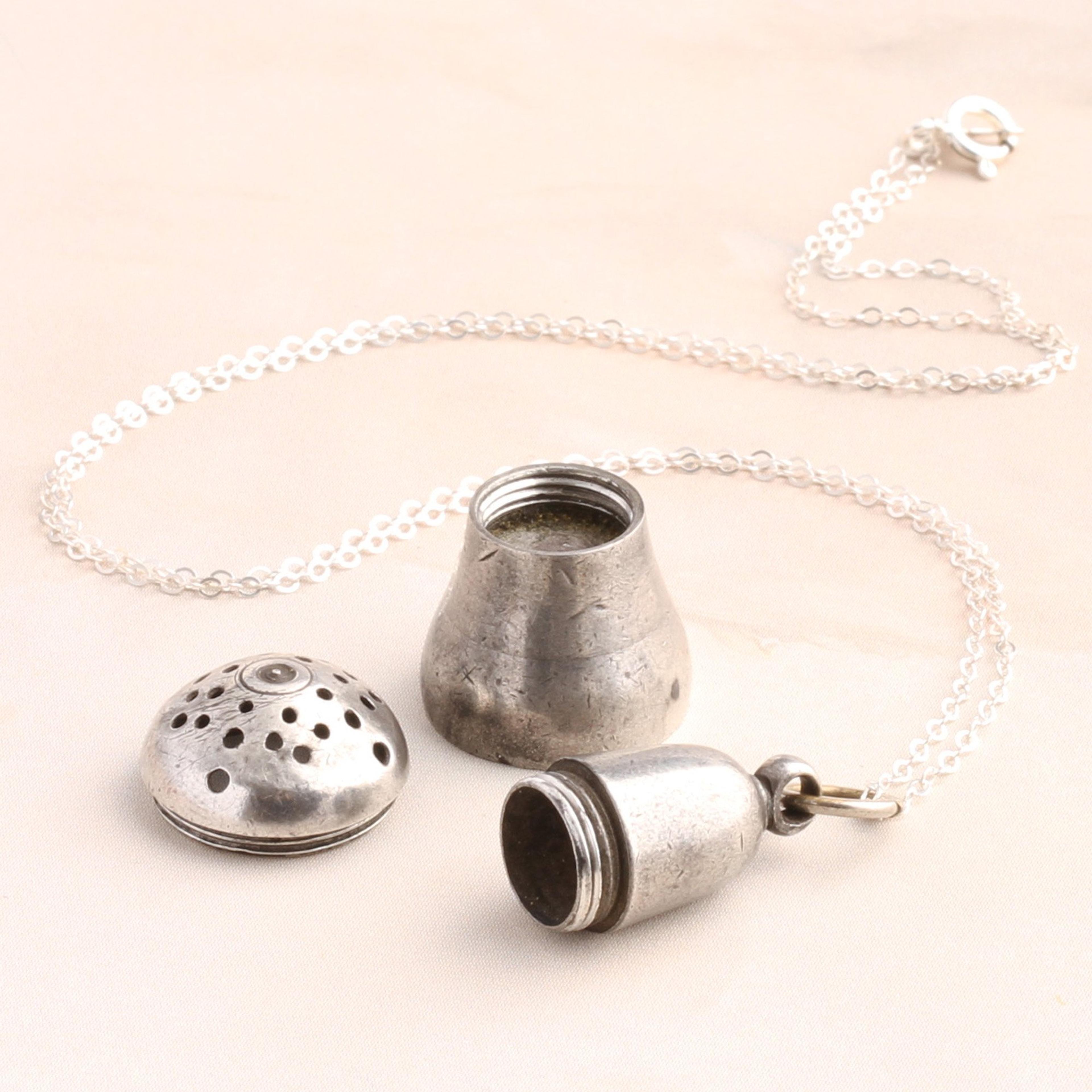This unassuming pear-shaped pendant is so much more than meets the eye. Fashioned in steel in the early 19th century, this piece does double duty as both a vinaigrette and a patch case. The perforated base unscrews and is meant to house a piece of cloth or cotton wool soaked in perfume or vinegar (to combat the unpleasant odors of everyday life in the year 1800). The top also unscrews to reveal a compartment designed to hold faux beauty marks known as patches, plasters or mouches (French for "flies"). These artificial beauty marks were fashioned in the shape of circles, stars, even crescent moons, using black silk taffeta or velvet backed in an adhesive resin. Patches were a clever way to conceal pock marks and scars by turning these blemishes into a bold fashion do.

Aboutthe
GeorgianEra
1714 — 1837
As imperialist war raged in the Americas, Caribbean, Australia, and beyond, the jewelry industry benefited: colored gems from all over the empire became newly available. A mix of artistic influences from around Europe contributed to the feminine, glittering jewels of the era. Dense, ornate Baroque motifs from Italy showed up in Georgian jewelry, as did French Rococo’s undulating flora and fauna. Neoclassical style made use of Greek and Roman motifs, which were newly popular due to the recently uncovered ruins of Pompeii and Herculaneum. Lapidary methods improved: the dome-shaped rose cut was popular, as was the “old mine cut,” a very early iteration of today’s round brilliant cut.
The boat-shaped marquise diamond cut was developed around this time, supposedly to imitate the smile of Louis XV’s mistress, the marquise de Pompadour. Paste — an imitation gemstone made from leaded glass — was newly developed in the 18th century, and set into jewelry with the same creativity and care as its more precious counterparts. Real and imitation gems were almost always set in closed-backed settings, lined on the underside with thin sheets of foil to enhance the color of the stone and highlight it's sparkle. This makes Georgian rings tough for modern women to wear, especially on an everyday basis: genteel, jewelry-owning ladies of the 18th century were not famous for working with their hands like we are. Nor did they wash their hands as much as we do. Water will virtually ruin a foiled setting, so take special care with your Georgian ring. Very little jewelry from this period is still in circulation, and it's very difficult to repair.

